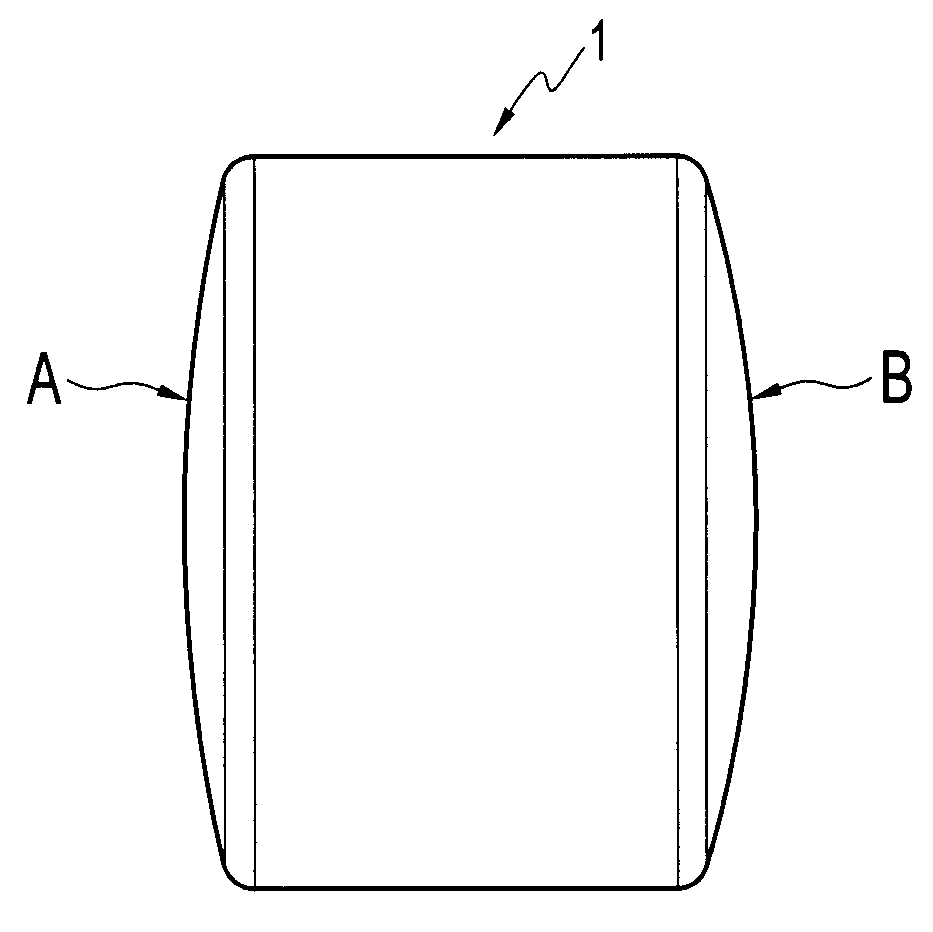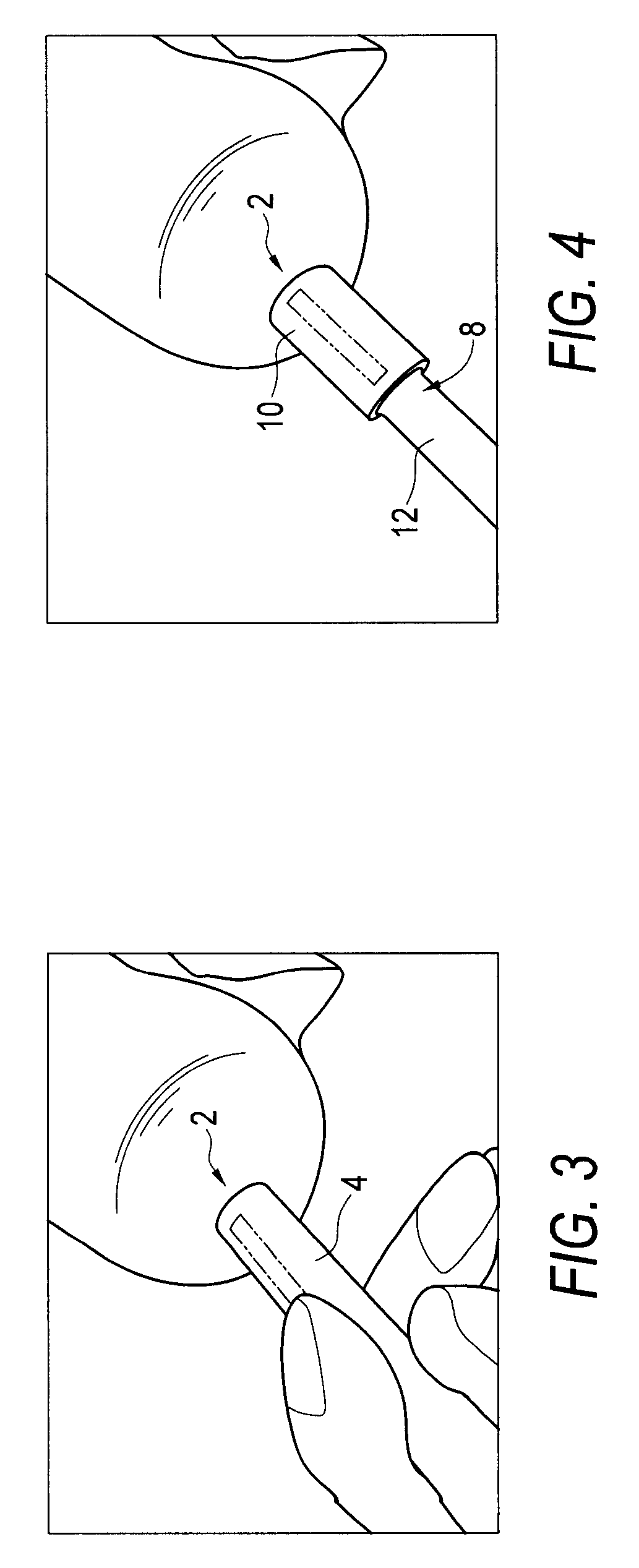Preformed implants for osteochondral repair
a pre-formed, osteochondral technology, applied in the field of surgery of isolated articular chondral defects, can solve the problems of enlargement of lesion, difficult and controversial treatment, and inability to treat chondral lesions
- Summary
- Abstract
- Description
- Claims
- Application Information
AI Technical Summary
Benefits of technology
Problems solved by technology
Method used
Image
Examples
Embodiment Construction
[0027] Referring initially to FIGS. 1 and 2, a cylindrical implant 1 according to the present invention is shown. Preferably, a series of implants 1 are created from a synthetic hydrogel (preferably Salubria™) and delivered to the surgeon with instrumentation for osteochondral transplantation. Each implant is cylindrical, with each end being contoured to match a portion of an articular surface.
[0028] The implants are manufactured by forming a cylindrical plug from a synthetic material. Alternatively, the implants can be formed of metal or allograft bone. An articular surface is established on at least one end of the cylindrical plug. If the implant has articular surfaces on both ends, each one preferably has a different contour.
[0029] More specifically, FIGS. 1 and 2 show a preformed cylindrical implant 1 provided with curved surfaces on both ends, the curvatures being different, so that each implant provides at least two options for matching the condylar surface being repaired. F...
PUM
 Login to View More
Login to View More Abstract
Description
Claims
Application Information
 Login to View More
Login to View More - R&D
- Intellectual Property
- Life Sciences
- Materials
- Tech Scout
- Unparalleled Data Quality
- Higher Quality Content
- 60% Fewer Hallucinations
Browse by: Latest US Patents, China's latest patents, Technical Efficacy Thesaurus, Application Domain, Technology Topic, Popular Technical Reports.
© 2025 PatSnap. All rights reserved.Legal|Privacy policy|Modern Slavery Act Transparency Statement|Sitemap|About US| Contact US: help@patsnap.com



